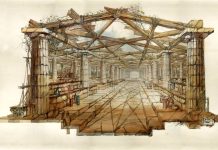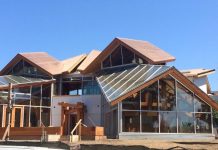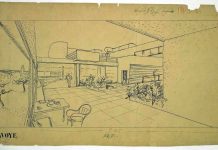Architects are responding in different ways to issues surrounding carbon emissions, energy consumption and climate change. The resulting green architecture is partly about adopting the right materials and technologies, but basic concepts such as the correct orientation of buildings and sensitivity to site are equally important in creating buildings that are at once welcoming to occupants and low in their impact on the Earth and its resources.
Building is one of the most energy-intensive human activities. The construction process alone takes up large amounts of energy, materials and land, and buildings—the biggest objects we create—have a huge impact on their sites and surroundings. When we begin to occupy a building, the consumption of energy and the production of waste material continue.
The idea of green or sustainable architecture has emerged over the past few decades to address these issues. Green architecture aims to produce buildings that have a low impact on the environment while remaining attractive structures to look at and to use. The movement has produced very diverse buildings—there is no one visual style that is “green.”
Roots and interests
The roots of green architecture are spread wide. Inspiration comes partly from outside architecture—from those who have written and campaigned about environmental issues, for example. There are also architectural roots in the alternative architecture movement, which was producing self-sufficient, “off-grid” buildings long before most of the world’s population became aware of climate change.
Absorbing these influences and thinking deeply about the environmental impact of structures has led green architects and builders to concentrate on several main areas. The key preoccupations of green architecture can be summarized as: choice of materials, energy consumption and production, waste management and the relationship of building to site.
The Autonomous House
The architects Robert and Brenda Vale built this influential sustainable house in England in 1993. Much of the structure is faced with traditional bricks (fired with gas from decomposing rubbish) so that the house fits into its British town setting. But it uses highly thermally efficient masonry, including high-density concrete blocks, and large areas of multilayer glazing to keep the heat in. An array of solar panels produces electricity, sometimes generating a surplus, which the occupants sell to the grid. The house is also self-sufficient in water supply and waste management.
Materials
Green architects seek to use materials that have a low environmental impact. This can mean selecting local materials, to reduce the energy consumed in transportation —sustainably grown timber, straw bales and earth have all been used. It might mean using recycled resources, such as the car tires and bottles used in Earthships. But it can equally mean utilizing conventional materials, such as concrete and glass, that are valued for their insulating or light-admitting qualities. In deciding on which materials to use, the architect is balancing their environmental impact with the qualities they will bring to the finished building—which in turn will have an environmental impact.
Energy
Renewable energy sources are key. Green buildings often have solar panels, wind turbines and other methods of energy production built-in. But equally important are designing and orienting the building to make best use of sun and shade. A conservatory with a wall of glass might be positioned on the sunniest side of the building to gather heat and make best use of the sun in winter—but with some shading (overhanging roofs, blinds or even trees) to reduce glare in the summer. Correct orientation enables the building to make the best use of available sun and shade. In some climates, especially where there is a prevailing wind, orientation can help keep the building well ventilated or cool.
Green buildings are also designed to retain the heat they gather from the sun or generate on-site. Thick walls of materials such as rammed earth or straw bales help interiors stay warm in the winter and cool in the summer. If the walls are thinner, generous insulation can be fitted to achieve the same effect. Double or triple glazing also keep in heat.
Air flow
A large amount of energy is consumed in many modern buildings to power air- conditioning units. Green buildings normally eliminate air conditioning by appropriate orientation and the careful placing of vents and window openings. The shape of a building can also influence air flow.
Water and waste management
A sustainable building is designed to reduce waste. The plumbing system often allows occupants to recycle waste water from washing machines or dish washing for flushing lavatories. Composting toilets are sometimes installed in green buildings, and users may also be encouraged to compost other household waste to feed the soil and reduce the amount of rubbish sent to landfill.
“Whatever the nature of the site, I try to create architecture that is never imposing on its environment.”
Tadao Ando, “Reflections on Underground Space”
A diverse architecture
Designing in this way has produced a fascinating body of green buildings across the world. Thinking in green terms has encouraged architects to experiment with new technologies, to look afresh at traditional materials, such as adobe, timber, bamboo and natural fibers, and to experiment with natural materials in new ways, as in straw-bale building.
It has also led some architects to develop the “organic” architecture pioneered by Frank Lloyd Wright. Earth-sheltered buildings, structures in which the relationship between inside and outside are explored in new ways, houses that celebrate the “elements” of earth, air, fire and water can all take on new “green” forms.
Sensitivity to site, too, makes green buildings extremely diverse. They range from massive, earth-walled houses in Arizona to lightweight bamboo structures in Southeast Asia, from highly insulated timber houses in Scandinavia to glass and corrugated iron buildings in Australia. Sustainability offers both hope for the future and a new richness to architecture.



















